New and Notable Plants for…
What’s new in the garden for 2021? Here are some suggestions of new and notable plants—both vegetables and flowers! If you haven’t sent your seed order yet, here are a few new plants to add to your list.
These were some suggestions I gleaned from a recent panel discussion on new varieties for home gardeners:
Disease-Resistant Basil
If downy mildew has been decimating your basil, look at the new downy mildew resistant basils in the Prospera series.
- ‘Prospera Compact’ is great for container growing, getting only 16 to 18 inches tall. Its dark green glossy leaves have that traditional Genovese taste and smell that we pesto lovers crave.
- ‘Prospera Italian Large Leaf’ produces lots of 4 inch long leaves on a 24 to 30 inch tall plant. The leaves are great wrapped around cheese for an appetizer, alongside mozzarella and tomatoes in a Caprese salad, or as a flavorful substitute for lettuce in a sandwich.
Both mature in 74 days and are slow to bolt but even if they do flower, just pinch off the blossoms and eat them too!
- ‘Rutgers Devotion’ is another new downy mildew resistant basil to try.
When you are ready to plant, see the Almanac’s Basil Growing Guide!
Aphid-Resistant Brussels Sprouts
Do you love Brussels sprouts but have a problem with aphids camping out in the baby sprouts and ruining them?
- Try ‘Divino’ which has tightly wrapped leaves making the developing sprouts less susceptible to insect damage. The tall stalks produce large, well-spaced, dark green sprouts in 105 days.
- If you’d rather have earlier, huge sprouts on a more compact plant, try ‘Speedia’. Considered a half-tall Brussel it gets only 30 to 36 inches tall and matures in 98 days.
When you’re ready to plant, see the Almanac’s Brussels Sprouts Growing Guide!
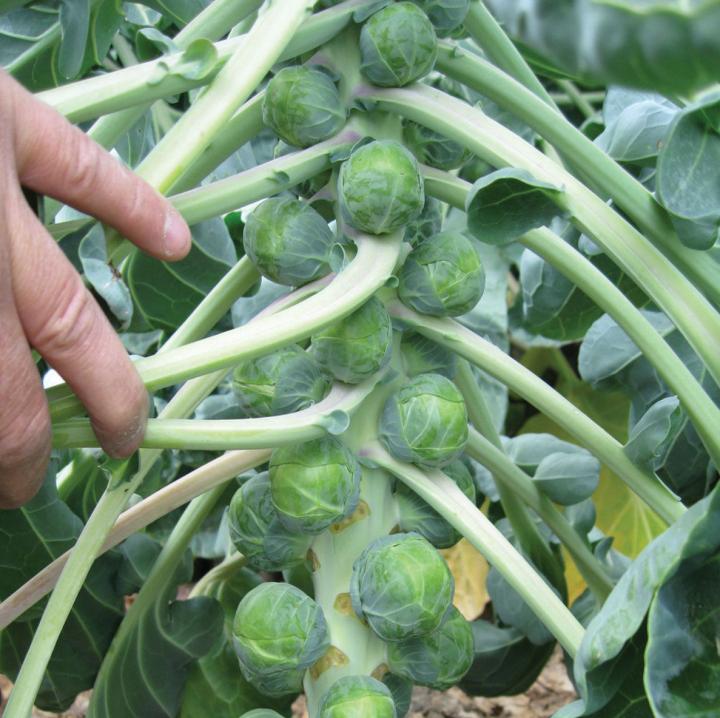
Photo courtesy of Johnny’s Seeds
Slow-to-Bolt Spinach
Spinach is a spring or fall vegetable crop. It often grows quickly but one issue is that it will “bolt” (flower) once daylight increases over 14 hours. So, when growing spinach, the trick lies in making it last as long as possible, especially in the spring, when lengthening days shorten its life.
- ‘Equinox’ spinach is a fast-growing variety which is slow to bolt, making it perfect for spring or fall planting. Mature in only 29 days, it has dark green, savoyed leaves on tall stems, and can be harvested at baby leaf or full size.
When you’re ready to plant, see the Almanac’s Spinach Growing Guide!

Photo courtesy of Johnny’s Seeds
Tomato That Tastes Like an Heirloom Yet Disease-Resistant
Heirloom tomatoes are known for their rich taste and meaty texture but often heirlooms are susceptible to disease and blight. However, Johnny’s Seeds in partnership with NCSU, has developed an organic heirloom that still delivers good yield.
- ‘Abigail’ tomato has been around for a few years but is worth a try if you are looking for an heirloom-type pink tomato that has high disease tolerance and is resistant to the dreaded late blight. Its one pound fruits are meaty and have all the flavor of an heirloom. They mature in 75 days on tall indeterminate plants.
When you’re ready to plant, see the Almanac’s Tomato Growing Guide!
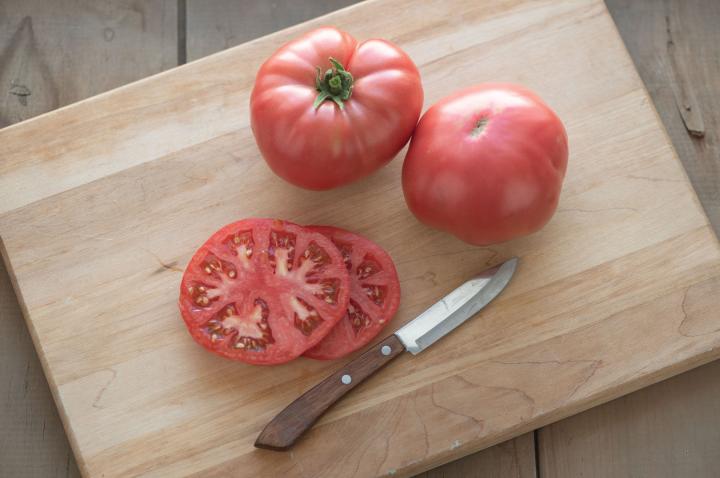
Photo Courtesy of Johnny’s Seeds
Thorn-less Eggplant
Many eggplant varieties have small prickly thorns, requiring caution and gloves when harvesting.
- If you are tired of getting stabbed while trying to pick your eggplants, give ‘Gaudi’ a try. The dark purple, tear-drop shaped fruits have a totally thornless green calyx. The tasty 8-inch long fruits are ready to pick in about 75 days. I feel an eggplant parm coming on!
When you’re ready to plant, see our Eggplant Growing Guide!
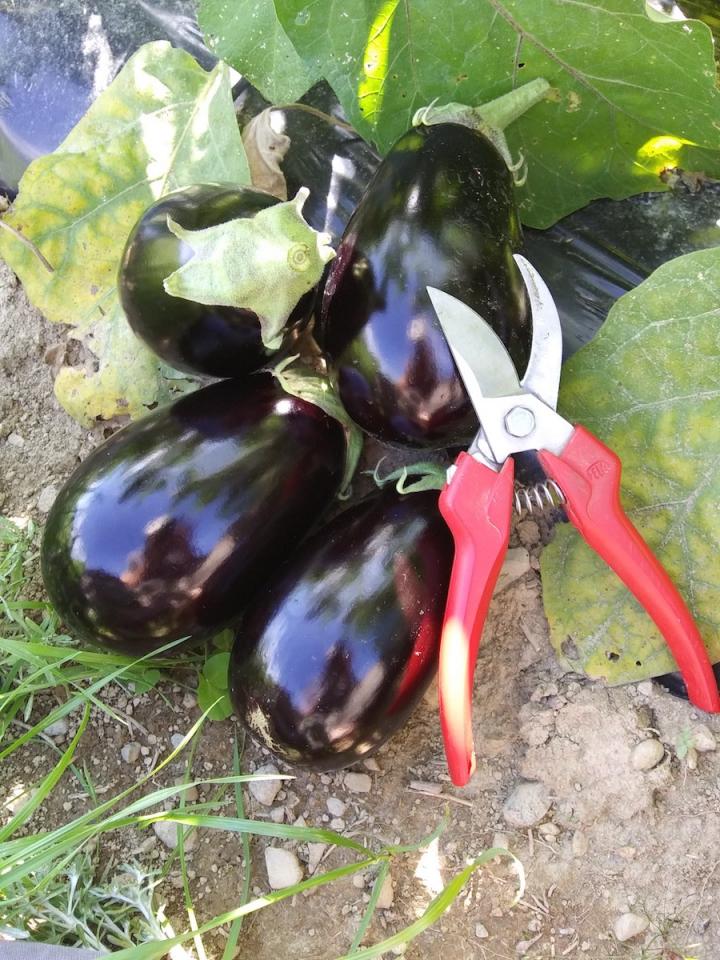
Photo Courtesy of Fedco Seeds
New Shallot Varieties
The All-America Selections for 2021 are out and they have a few new varieties for you to consider:
- ‘Creme Brulee’ is the first shallot to be an AAS winner. It is a French banana echalion called a “cuisse de poulet” or chicken thigh due to its 4 to 5 inch long, cylindrical shape and peachy pink skin. (More like a drumstick than a thigh!) We grew a similar type last year called ‘Zebrune’ which did pretty well so I will probably give this one a try if I can find the seeds. They are already sold out at Johnny’s.
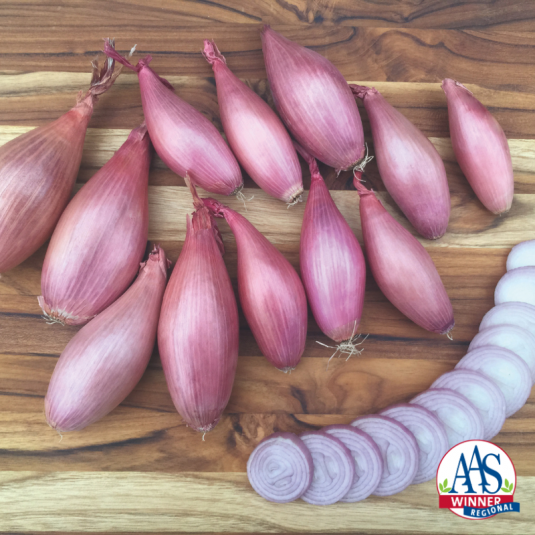
Quick and Zippy Peppers for Pots
Are you a fan of jalapeno peppers? Thanks to their compact habit, they are perfect for growing in containers and hanging baskets.
- Pepper ‘Pot-a-peno’ is a compact 12 to 15 inch tall plant especially made for pots because of the way the fruit hangs down, making it easy to harvest without damaging the appearance or productivity of the plant. A dense foliage canopy makes for an attractive addition to your patio or balcony garden. It’s also earlier to mature than other jalapenos giving you a head start on your garden’s harvest.
- It bears about 35 to 50, 3 to 4 inch long, mildly hot jalapeno-type peppers per plant, starting in about 60 days from transplanting. Hang one of these right outside the kitchen door and you’ll always have a bit of heat at hand.
Learn more about growing hot peppers.
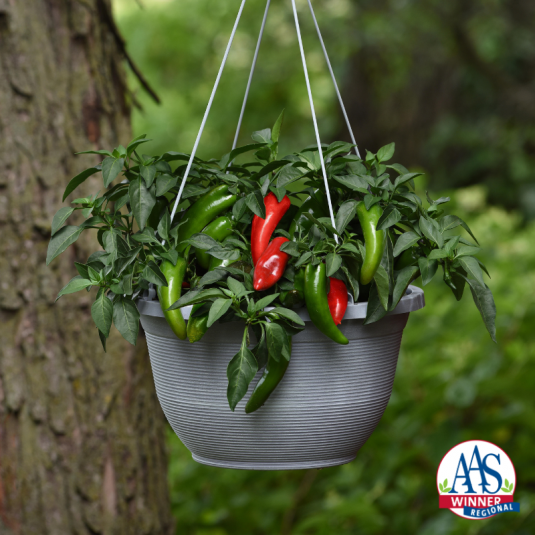
Find this quick and zippy pepper at Park Seeds!
The Perfect Acorn Squash
- Acorn squash lovers are really going to like the sweet nutty flavor of ‘Goldilocks’. Its bright orange, one pound fruits are a perfect side dish for one or two. The 30-inch tall, bushy plants spread 4 to 5 feet and will start to bear in 85 days from seed producing about 10 fruits per plant! Disease-tolerant, vigorous, and high yield, this squash is just right! No curing is needed and they last 2 to 3 months in storage. The bright orange fruits with uniform shape and color double as an ornamental decoration.
See our Winter Squash Growing Guide.

Stunning New Flowers to Try
Zinnias are a colorful annual flower, and the “Profusion” variety has been the “go to” zinnia for disease resistance. So, we were happy to see that there is a new color combo we can grow: ‘Profusion Red Yellow Bicolor.’ Check out this All-American Gold Medal Winner!
- ‘Profusion Red Yellow Bicolor’ is a double flowering, 2 1/2 inch wide zinnia with yellow petals and a dark red central eye! The 8 to 14-inch tall, mounded plants are covered with blossoms all season long. They are great for edging and hanging baskets.
- This sweet zinnia starts the season with a bold vibrant red center ring surrounded by golden-yellow outer petals. As the season progresses, the aging flowers morph into soft, beautiful shades of apricot, salmon, and dusty rose to bring a plethora of color to the garden, all from one variety!
See our Zinnias Growing Guide.
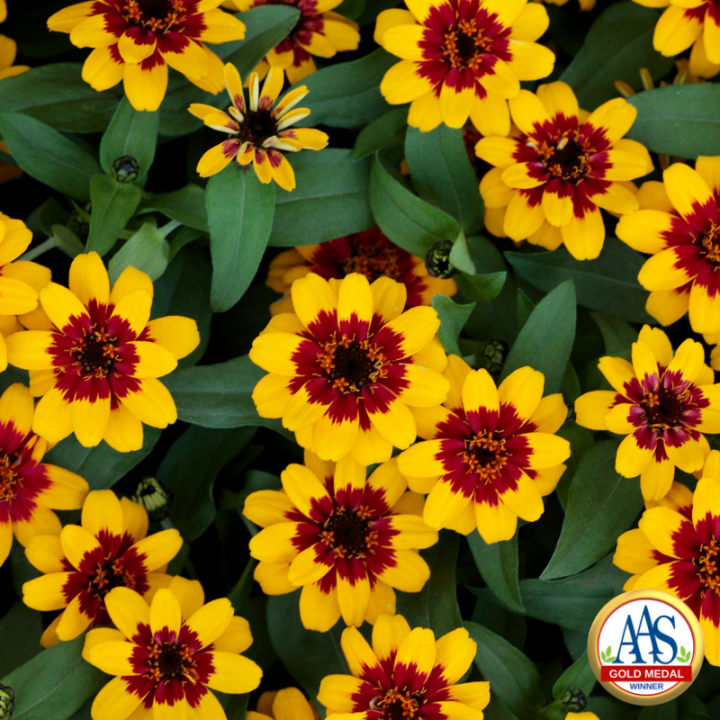
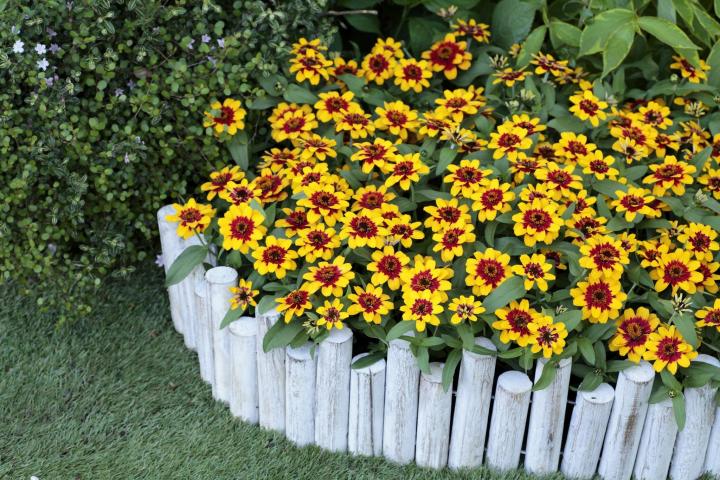
Cold- and Heat-Tolerant Shata Daisies
Leucanthemums, also known as Shasta Daisies, are used for both cut flowers and garden highlights while also providing food and habitat for many kinds of pollinators.
- Who needs another daisy you ask? Well this one is a winner! Leucanthemum ‘Sweet Daisy Birdy’ is perennial in zones 3 to 10, surviving Canadian winter and hot Texas summers. A Shasta daisy, it has 5 inch wide flowers on 18 to 24 inch tall plants and is pollinator friendly. Available only as a plant.
- Enjoy this beauty in the garden as a medium-height bright spot (great for moonlight gardens) that will provide years of beauty with very little maintenance other than deadheading spent blooms if desired, but not necessary.
See our Shasta Daisy Growing Guide.
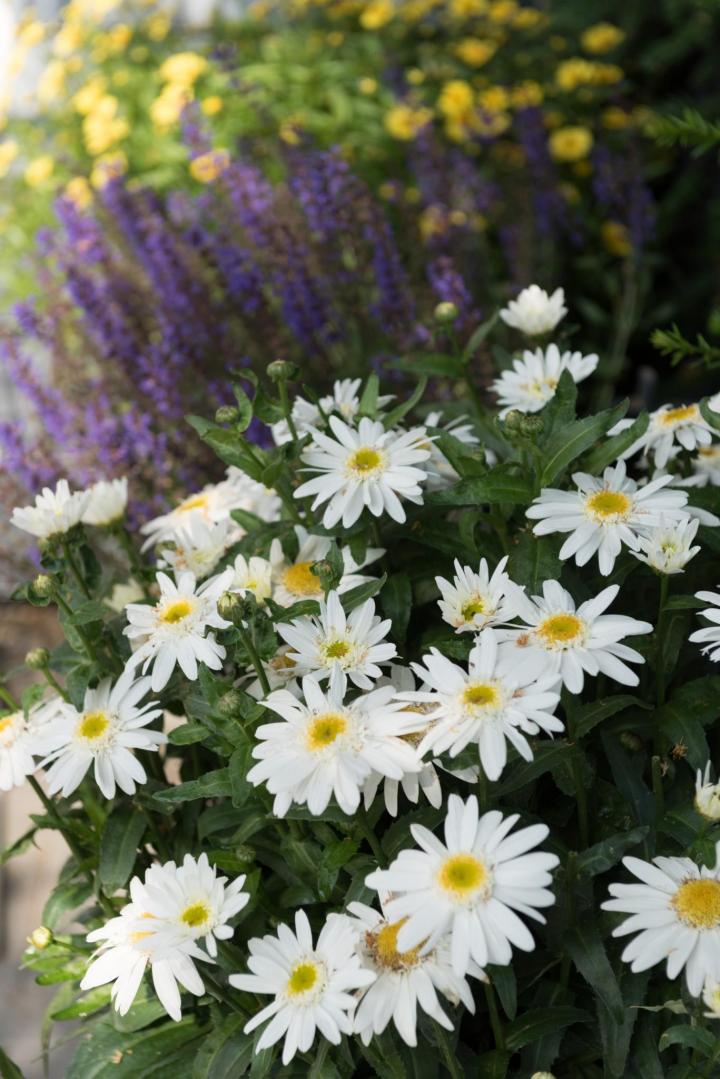
These are just a few of the new things that have caught my attention but I am sure there are even more out there. We all have our tried-and-true favorites but It is fun to try a few new things every year. Who knows, they might just become your future favorites!

